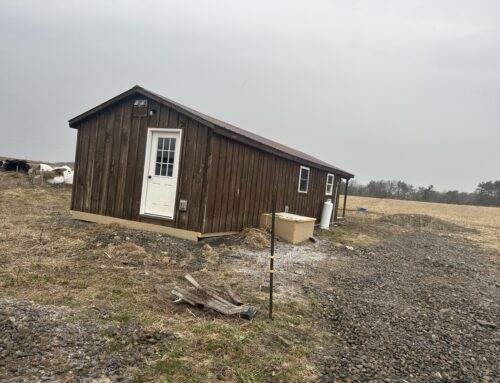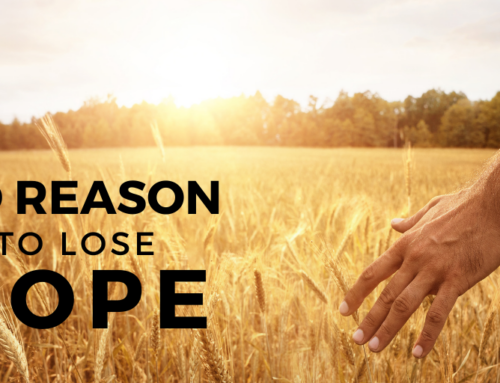A bruised reed he will not break, and a smoldering wick he will not snuff out. (Isaiah 42.3)
My parents divorced in 1975. From then on, I have been identified as a child of a broken home. This brokenness certainly describes the nature of the family we once had, or hoped to have. That image of family is forever broken, shattered, never to be fixed.
But I am not a broken person. Bruised, yes. Even deeply wounded, but not broken. At least not forever broken. Fractured, but capable of being mended. In time, with plenty of prayer and much care, I have passed through stages of recovery to become a wounded healer who intimately feels the pain of others and, by God’s grace, responds in love.
In her soon-to-be published book Kicked to the Curb, Dr. Susan Lockwood describes resilience is the life of a young woman named Rose.
Rose is a twenty-something young woman whose father was addicted to drugs. Early in life, he committed a felony and was sent to prison, leaving her alone with her mother and older sibling throughout her elementary and middle school years. Her mother, who did not have a high school credential, was left to support the family. Rose was a good student. She managed to keep her father’s incarceration to herself because none of her peers ever really asked about her father. Twice a month, her mother would take her to visit him in prison. She remembers getting gifts from him at Christmas time through programs like “Angel Tree.”
Rose’s father was released from prison around the time she started high school. His drug addiction continued, and there were times she would come home from school to find the family’s television or other items gone, because he had taken them and sold them to get money for drugs. One time he even invaded her room and took some of her personal belongings and sold them. He couldn’t keep a job, and sometimes he would be gone for weeks at a time. Rose knew when he was gone, he was probably out running with his friends who were also doing drugs.
Despite the daily upheaval at home, she kept going, becoming the first in her family to finish high school, and earned a full scholarship to college. She decided to major in education and become a teacher.
In time, things at home settled down, her father found a job, and her family established a routine. By this time, Rose was off at college and didn’t experience family life first-hand. She excelled in her studies and became the first one in her family to earn a bachelor’s degree. Everyone was proud of Rose. She was a beautiful, talented, intelligent young woman. Rose was resilient.
Why is it some persons are resilient while others are not? First and foremost, it is due to God’s mysterious grace. Our circumstances do not dictate our destiny. God can and often does rescue us with resilience to reach beyond the expectations of the world around us. Children like Rose are not doomed to a perpetual cycle of abuse and neglect. God mends broken vessels.
How does God do this? God can do this anyway He chooses, but more often than not, God chooses to work through the actions of His people. Again, Rose —
How is it that Rose was able to succeed, even though by definition, she was an at-risk youth? When asked about this, Rose was very thoughtful. She described the times she would hang out at the home of her best friend and see a different picture of family life, which helped her realize there was hope for something different. She said when she was in middle school, one of her teachers took an interest in her and helped her set a goal to earn a college scholarship. Until that time, she hadn’t even considered she would be able to go to college. This gave her hope for something different. On the day she came home from school and found her father had taken her special belongings and sold them for drugs, she was crushed. She said that as she wrote about it in her journal, she decided to choose to hope for something different.
Rose said school was always a safe place for her. It was consistent. People cared for her. She was happy there.
For Rose, resiliency was the ability to cope and adapt. Watching others make mistakes and fail became helpful feedback to her as she chose to learn from their mistakes. Although some of the problems she faced were not solvable, she learned to manage them, because along the way she encountered circumstances that allowed her to hope for something different.
Now, Rose has a job teaching in a prison classroom. Her students have no idea that she is the daughter of an individual who was incarcerated. She understands addiction. She understands the problems and struggles that her students face, because she has lived through them herself. Her perspective makes it easy for her to relate to them and help them succeed. She strives to make her classroom a safe place for her students to learn. At the time of this writing, the students who are enrolled in her classes are among the highest number of students who successfully pass the high school equivalency exam.
Rose’s resilience and the way she has chosen to give back is remarkable. During her young life she encountered adults who sparked inspiration and hope. She spent time with others and realized her normal didn’t have to be static. She used this as a catalyst to set goals for herself. Once she achieved her goals, she returned to a place where she could provide similar inspiration and hope. She is an example of how caring adults can make a difference to a child’s life trajectory.
Dr. Lockwood contends that the one common denominator in the life of a resilient youth is a caring adult who encourages them. More than this, it is an adult who has been inspired (consciously or not) by our God who loves us when we are unlovable, who gives us something to strive for, who instills in us hope for better days ahead.
Discover more from Delight in Disorder
Subscribe to get the latest posts sent to your email.







